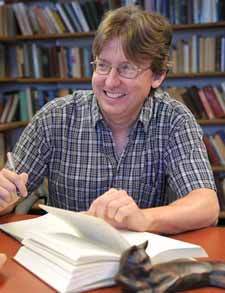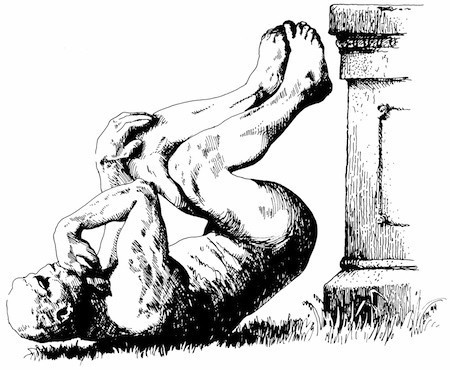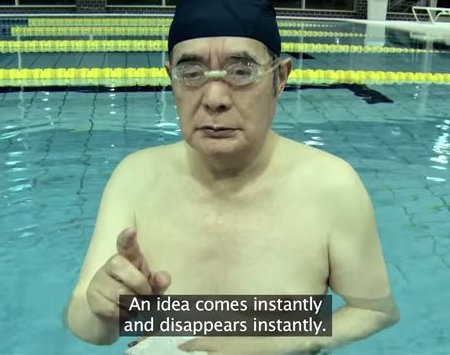Marc Abrahams's Blog, page 341
March 17, 2015
Piano-crush test at the Kirkaldy Testing Museum
Investigator Andrew George alerted us to this video, which documents a piano being crushed at the Kirkaldy Testing Museum, in London. The museum tests materials.
Andrew George says “I found this a rather disturbing video – especially around 1 min 50 secs when there was a little terminal music.”
You can see and hear Andrew George test the mettle and patience of an audience of 750 people this Friday evening, March 20, when he recites some of William Topaz McGonagall‘s bad poetry, as part of the Ig Nobel show at Imperial College London.
BONUS: A treatise about piano destruction.
Ig Nobel show at Nottingham Trent, Wed eve
The 2015 Ig Nobel EuroTour descends Wednesday evening, March 18, on Nottingham Trent University. Here are details:
NOTTINGHAM TRENT UNIVERSITY, Nottingham, UK. City site,
Goldsmith Street. Wednesday, March 18, 6:30 pm. ( TICKETS .) Featuring: Marc Abrahams; Chris McManus (Ig Nobel winner, Scrotal asymmetry in ancient Sculpture and man); Richard Stephens (Ig Nobel winner, The effect of swearing on pain); Richard Webb (Tribute to John Hoyland, the father of Nominative Determinism); plus some dramatic improbable readings from bizarre, genuine scientific studies.
BONUS: The complete tour schedule.
March 16, 2015
“It’s [wildcard] Jim, but not as we know it” — The Firm’s lyrics in academic paper titles
Which pop act has inspired the most titles for scholarly academic papers? The Beatles? The Velvet Underground? A Flock of Seagulls? A likely candidate is the 80’s UK band The Firm. Although it’s fair to say that they were never quite as famous as the pop ensembles mentioned above, nonetheless more than a dozen academic authors have, Improbable believes, used one of their key lyrical phrases as a basis for papers’ titles.
Here a just a few examples :
• It’s barcoding Jim, but not as we know it
• It’s marriage Jim but not as we know it. Is the ban on same-sex marriage in the United Kingdom justified?
• It’s FPL, Jim—But Not as We Know It! Opportunities for the New Commercial Architectures
• It Is Democracy, Jim, But Not As We Know It.- On the Impact of Knowledge Systems on Democracy
But if the authors thought that they were quoting Spock from the original TV series of Star Trek – they were very probably mistaken. It seems that Spock never actually said “It’s life Jim, but not as we know it.” Prompting Improbable to put forward the theory that the phrase was instead borrowed from the ‘hook’ line of The Firm’s novelty hit Star Trekkin’. And there’s further evidence in support of our hypothesis – we can find no academic papers with the title “It’s [wildcard] Jim, but not as we know it.” before 1987, when the record was released.
March 15, 2015
Cock-Eyed Optimism: Using a Foreskin to Repair Eyelids
This study documents a case of cock-eyed optimism in a German surgical team, and the presumably happy result for the patient:
“Cicatricial ectropion in ichthyosis: a novel approach to treatment,” Detlef Uthoff [pictured here], M. Gorney and C. Teichmann, Ophthalmic Plastic and Reconstructive Surgery, June 1994, vol. 10, no. 2, pp. 92-5. The authors, at Eye-Hospital Kiel-Bellevue, Kiel, Germany, report:
“An uncircumcised youth with total body involvement from ichthyosis developed bilateral upper and lower ectropion. The penile foreskin was the only possible suitable donor site because it seemed unaffected by the disease. A circumcision was performed and the foreskin divided into four separate full-thickness skin graft triangles to treat the four-lid ectropion. There was successful resolution of the eye symptoms and a watertight closure. To our knowledge, this is a unique case in which penile foreskin has been used to correct cicatricial ectropion.”
Ig Nobel show at Portsmouth U, Monday night
The 2015 Ig Nobel EuroTour descends Monday night, March 16, at Portsmouth University. Here are details:
PORTSMOUTH UNIVERSITY, Portsmouth, UK. Richmond Building, Portland Street. Monday, March 16, 6:00 pm. (TICKETS.) Featuring: Marc Abrahams; Chris McManus (Ig Nobel winner, Scrotal asymmetry in ancient Sculpture and man); Minna Lyons (Ig Nobel winner, Relation between night owls and psychopathy); David Dunstan (Effectiveness of throwing snails over the garden fence); Richard Webb (Tribute to John Hoyland, the father of Nominative Determinism)
BONUS: The complete tour schedule.
March 14, 2015
Dr. NakaMats discusses his ideas for better ideas
Dr. NakaMats, possibly the greatest man in the world, who is about to make his grand farewell appearances in the UK, Denmark and Sweden, granted an interview to Jack Preston of Virgin Entrepreneur.
Dr. NakaMats was awarded the 2005 Ig Nobel Prize for nutrition, for photographing and retrospectively analyzing every meal he has consumed during a period of 34 [now, in 2015, 44] years (and counting). In March, in the company of several other Ig Nobel Prize winners, he will be the star of stars on the Ig Nobel tour of Europe [click here for the tour schedule], sharing his ideas with audiences, and gathering acclaim, in London, Aarhus, Copenhagen, and Stockholm.
Here are excerpts from the Virgin Entrepreneur interview:
Better ideas with Dr NakaMats
Yoshiro Nakamatsu, or Dr NakaMats as he is more widely known, is one of the world’s leading inventors with over 3,500 patents to his name. We sat down with the cult hero to find out how we can all come up with better ideas.
It’s not easy to forget Dr NakaMats’ most famous invention, the Floppy Disk, with the entrance to his Tokyo residence set inside a door-sized replica of the idea which he claims to have come up with in 1952, before later licensing it to IBM in the late 1970s. Since then he has worked tirelessly to cement his positon as one of the world’s most prolific inventors, with his list of patents including a self-defence wig, a cigarette for activating the brain, jumping shoes, the ‘Enerex System’ for generating hydrogen and oxygen along with a condom that comes with an embedded magnate for “improving sensitivity in the female organs”.
With a lifetime of weird and wonderful inventions behind him Dr NakaMats is now facing his biggest challenge to date, having recently being diagnosed with prostate cancer….
…To help with the recording of ideas during this time, Dr NakaMats has even invented waterproof paper and pencils, claiming “an idea comes instantly and disappears instantly”.
By getting as close to death as possible, Dr NakaMats believes we will have our greatest ideas. Let us hope that his theory is proven to be correct as he continues his mission to find his most important invention to date.
BONUS: The documentary film “The Invention of Dr. Nakamats“:
The director, Kaspar Schroeder, is now filming a second documentary. Parts of what happens on our March 2015 tour of Denmark will be in that documentary.
Brady Mackowiak joins Luxuriant Facial and Former Hair Clubs (LFHCfS)
Brady Mackowiak has joined the Luxuriant Facial Hair Club for Scientists (LFHCfS) and the Luxuriant Former Hair Club for Scientists (LFHCfS). He says:
Mr. Mackowiak is an engineer in the Fuel Fabrication Department at Idaho National Laboratory where he works on application of fabrication process to uranium fuel systems. He has chosen to focus his hair growth entirely in the facial region where his beard is a source of numerous discussions among his colleagues. His luxuriant facial hair is (many feel) the primary reason his visage occupied the lede photograph in a New York Times article. Unfortunately the face shield and leather jacket (worn as personal protection equipment, not just a fashion statement) serve to obscure much of the beard’s magnificence.
Brady Mackowiak , LFHCfS
Fuel Fabrication Engineer
Idaho National Laboratory
Idaho, USA

Graphene + Coffee: Most glam substance, foodstuff combined
At last, at last, it’s happened. The most glamorous substance — graphene — has been brought to bear on the most glamorous foodstuff — coffee.
Details are in this study:
“Molecularly imprinted coated graphene oxide solid-phase extraction monolithic capillary column for selective extraction and sensitive determination of phloxine B in coffee bean,” Haiyun Zhai, Zihao Su, Zuanguang Chen, Zhenping Liu, Kaisong Yuan, and Lu Huang, Analytica Chimica Acta, vol. 865, no. 20 March 2015, pp. 16–21. The authors are at Guangdong Pharmaceutical University and Sun Yat-sen University, Guangzhou, China.
BONUS: This video is labeled “Coffee Break at Graphine Week“:
March 13, 2015
“Is Death Bad for a Cow?”
 Professor Ben Bradley is chair of the Department of Philosophy at Syracuse University, Syracuse, NY, US. The professor asks the question “Is Death Bad for a Cow?” In fact he has asked several times – once at West Virginia University, US, in 2007, and again at the University of Reading, UK, in 2008, then at Newcastle University, UK, in 2011. And he will ask once more in a forthcoming Oxford University Press book (for 2015) entitled : The Ethics of Killing Animals. He also discusses the matter in his 2009 book Well-Being and Death , Chapter 4, Section 5, entitled ‘Does Psychology Matter? : Cows’. Specifically touching on the work of professor David Velleman (of New York University)
Professor Ben Bradley is chair of the Department of Philosophy at Syracuse University, Syracuse, NY, US. The professor asks the question “Is Death Bad for a Cow?” In fact he has asked several times – once at West Virginia University, US, in 2007, and again at the University of Reading, UK, in 2008, then at Newcastle University, UK, in 2011. And he will ask once more in a forthcoming Oxford University Press book (for 2015) entitled : The Ethics of Killing Animals. He also discusses the matter in his 2009 book Well-Being and Death , Chapter 4, Section 5, entitled ‘Does Psychology Matter? : Cows’. Specifically touching on the work of professor David Velleman (of New York University)
“David Velleman claims that cows cannot conceive of themselves as existing through time, and that it follows from this fact that their deaths are not bad for them.
Velleman holds the following thesis about intrinsic value: ‘unless a subject has the bare capacity, the equipment, to care about something under some conditions or other, it cannot be intrinsically good for him.’ Given this thesis and the supposition that cows cannot conceive of their futures, it follows that cows have no lifetime well-being at all. For cows cannot care about how their lives go; they can care at any given time only about how things go for them at that very time. And since cows have no lifetime well-being levels, their deaths cannot be bad for them.”
But professor Bradley does not concur.
“Velleman’s conclusions are unjustified, and, I think, false as well.”
Adding :
“One may wonder where Velleman gets his information about cows.”
Note: The photo above is taken from Syracuse University News which informs of the professor’s recent $94k grant from the Immortality Project which is based at the University of California, Riverside, US.
Also see: [somewhat related] Eating plants – is it wrong? and Is Eating People Wrong?
BONUS (possibly related, somehow): “Cows are deadlier than you ever knew” [article in Io9, thanks to investigator Scott Langill for bringing it to our attention.)
March 12, 2015
Ig Nobel EuroTour begins Tonight, at Brunel University
The 2015 Ig Nobel EuroTour begins Thursday night, March 12, at Brunel University. Here are details:
BRUNEL UNIVERSITY LONDON, Uxbridge, UK. Eastern Gateway Building. Thursday, March 12, 7:00 pm. ( TICKETS .) Featuring: Marc Abrahams , Ray Goldstein (Ig Nobel winner, The physics of ponytails); David Dunstan (Effectiveness of throwing snails over the garden fence); Richard Webb (Tribute to John Hoyland , the father of Nominative Determinism); QI/ Museum of Curiosity researcher/performers James Harkin , Dan Schreiber and Stevyn Colgan (dramatic readings from bizarre, genuine research studies); Andrew George (Recitation of bad engineering poetry by the bad poet William Topaz McGonagall )
See the full tour schedule for all the tour events in the UK, Belgium, Denmark, and Sweden.
Marc Abrahams's Blog
- Marc Abrahams's profile
- 14 followers





